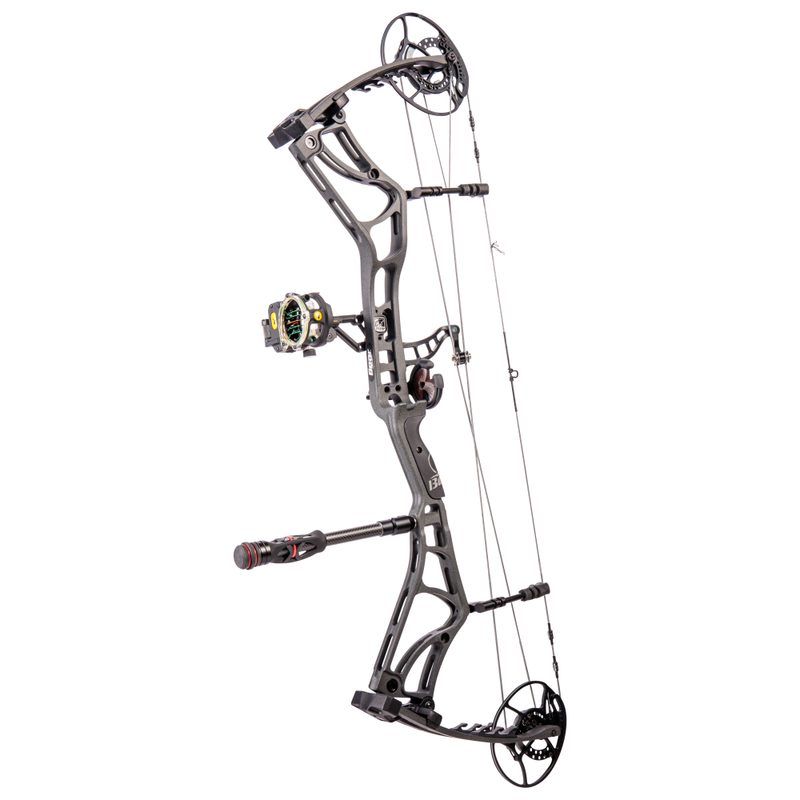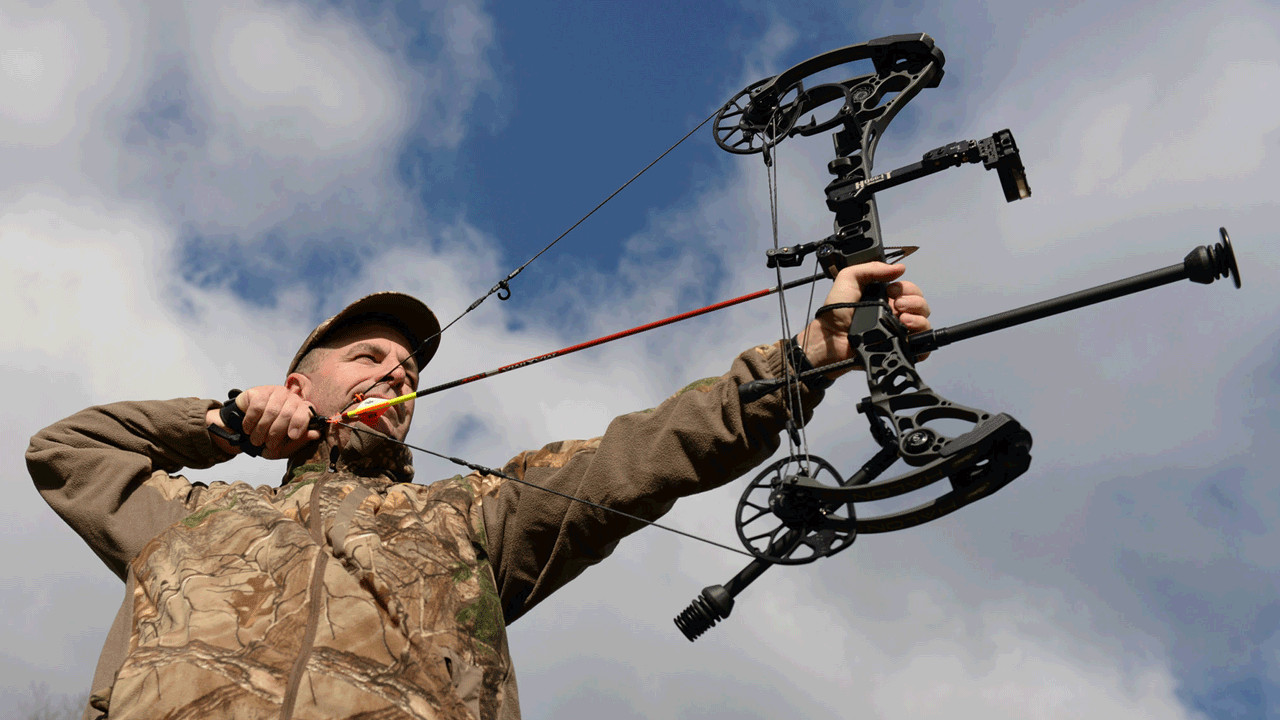Maximize Your Shot: Picking the Right Archery Stabilizer
Maximize Your Shot: Picking the Right Archery Stabilizer
Blog Article
Master the Art of Archery: Recognizing the Importance of a Stabilizer in Your Configuration
Whether one is an experienced archer or just beginning their trip, the value of a stabilizer in their configuration can not be overemphasized. By recognizing the advantages of using a stabilizer, thinking about the right aspects when choosing one, and properly mounting and readjusting it, archers can elevate their abilities to brand-new heights.
The Function of a Stabilizer in Archery
A stabilizer plays a vital function in archery by boosting equilibrium and lowering resonances during the shot. A stabilizer helps to counteract these resonances by absorbing and dissipating the energy (archery stabilizer).
One of the primary advantages of a stabilizer is its capability to boost equilibrium. The weight of the stabilizer aids to disperse the weight equally, minimizing the pressure on the archer's arm and boosting stability.
Along with equilibrium, a stabilizer also helps to decrease torque. When an archer launches the bowstring, there is a natural tendency for the acquiesce revolve in the hand. This turning, referred to as torque, can trigger the arrow to drift off-course. The weight and layout of a stabilizer counteract this turning, guaranteeing an extra exact and consistent shot.
Advantages of Using a Stabilizer
The usage of a stabilizer in archery supplies numerous advantages that improve an archer's efficiency and general capturing experience. By taking in and dampening these vibrations, the stabilizer boosts the stability of the bow, enabling for more regular and accurate shots.
Second of all, a stabilizer aids to stabilize the bow by including weight to the front end. This weight circulation counteracts the natural tendency of the bow to tip forward upon launch, decreasing the quantity of motion and improving the archer's ability to preserve aim on target.

Last but not least, a stabilizer can additionally serve as a shock absorber, reducing the shock and recoil experienced upon release. This not just boosts the comfort of capturing but likewise lessens the threat of injury or stress on the archer's body.
How a Stabilizer Enhances Accuracy
Enhancing the accuracy of an archer's shots, a stabilizer plays a crucial role in enhancing general efficiency. archery stabilizer. By including security to the bow, a stabilizer aids lessen the undesirable motion and resonance that can take place during a shot. This reduction in movement permits the archer to maintain a constant objective, resulting in even more accurate and consistent shots

In addition, a stabilizer helps to wet vibrations that happen discover this upon launch. These vibrations can cause the bow to drink, affecting the arrowhead's trajectory and precision. By soaking up and dissipating these resonances, a stabilizer helps to maintain the bow's stability and ensure a accurate and smooth shot.
In addition, a stabilizer can additionally aid in balancing the weight circulation of the bow (archery stabilizer). By including weight to the front of the bow, a stabilizer helps to stabilize the weight of accessories, such as sights or quivers, which may be connected to the bow. This balanced weight distribution helps the archer preserve a regulated and stable capturing position, resulting in boosted accuracy
Aspects to Take Into Consideration When Selecting a Stabilizer
When selecting a stabilizer for your bow, it is very important to think about a number of elements that will add to its general effectiveness and viability for your specific capturing style. The initial factor to consider is the size of the stabilizer. Stabilizers are available in different sizes, ranging from brief to long. Longer stabilizers generally provide extra security and equilibrium, yet they can additionally be larger and harder to maneuver. Shorter stabilizers, on the other hand, use better maneuverability yet may compromise some security.
An additional variable to consider is the weight of the stabilizer. The weight of the stabilizer can affect the balance of your bow.
In addition, it is very important to consider the style and building of the stabilizer. Some stabilizers have adjustable features, such as flexible length or flexible weights, which allow you to personalize the stabilizer to your details demands. The materials utilized in the building and construction of the stabilizer can additionally affect its effectiveness. Carbon fiber stabilizers are durable and light-weight, while light weight aluminum stabilizers provide a balance in between weight and strength.
Various stabilizers may work better for specific shooting styles, such as target shooting or hunting. It is suggested to seek advice from with experienced archers or experts to identify official website which stabilizer will certainly finest suit your specific requirements.
Tips for Appropriately Setting Up and Changing a Stabilizer
Proper installment and change of a stabilizer is critical for enhancing its performance and guaranteeing optimal capturing precision. When installing a stabilizer, it is essential to adhere to a couple of key actions to ensure its effectiveness. Figure out the appropriate length of the stabilizer based on your capturing design and choices. Longer stabilizers offer even more stability yet can be much less manoeuvrable, while shorter stabilizers offer increased ability to move yet may give up stability. Once you have actually picked the appropriate size, attach the stabilizer to the bow making use of the given mounting equipment. Guarantee that the stabilizer is safely secured and lined up with the bow's riser.
After go right here mounting the stabilizer, it is needed to make changes to achieve the preferred equilibrium and shot uniformity. Start by adjusting the weight distribution along the stabilizer. This can be done by including or eliminating weights from the stabilizer's weight system. Experiment with different weight configurations to find the equilibrium that works best for you. Furthermore, take into consideration readjusting the angle of the stabilizer to adjust the shot. A small forward or backwards tilt can affect the bow's balance and how it responds throughout the shot.

Verdict
In final thought, a stabilizer plays an essential function in archery by boosting accuracy and decreasing bow torque. When choosing a stabilizer, elements such as product, weight, and size ought to be considered to meet private demands.
Additionally, a stabilizer can also help in balancing the weight distribution of the bow. By including weight to the front of the bow, a stabilizer assists to stabilize the weight of accessories, such as views or quivers, which might be attached to the bow. Some stabilizers have flexible functions, such as adjustable length or adjustable weights, which enable you to tailor the stabilizer to your specific demands. Carbon fiber stabilizers are light-weight and sturdy, while light weight aluminum stabilizers supply a balance in between weight and rigidity.
Longer stabilizers provide more security but can be much less maneuverable, while much shorter stabilizers offer increased ability to move however may compromise security.
Report this page